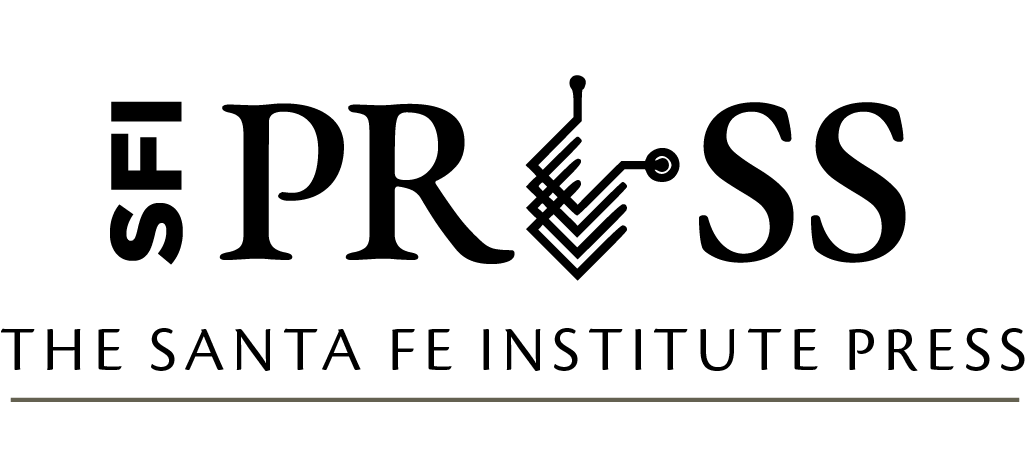Foundational Papers in Complexity Science pp. 1–15
DOI: 10.37911/9781947864528.01
Maximum Power as a Physical Principle Evolution
Author: Luís M. A. Bettencourt, University of Chicago and Santa Fe Institute
Excerpt
The reconciliation of evolution—the theory underlying all of biology and society—and physical theory, which explains energy and matter and underlies most current technology and engineering, remains one of the most important problems in science. A synthesis of these very different theories is essential for creating a general, predictive theory of complex systems (Mitchell 2009; Thurner, Hanel, and Klimek 2018). Some of the deepest unanswered questions in science, such as the origins of life or the sustainability of future human societies, also hinge on a theory that can articulate the physical and biological worlds and produce extrapolations to entirely new situations (Elmqvist et al. 2021).
An important step in this direction was taken a century ago by Alfred Lotka (1922a) with a very simple deductive observation that was then, and it is now, as powerful as it is intriguing. His insight, following closely on developments in statistical physics and specifically the work of Boltzmann and the second law of thermodynamics, is simple and direct. It first recognizes that 1) any living organism requires “available energy,” which must be harvested from its environment, to live and thrive. It follows that 2) organisms that can harvest more energy from their environment relative to others will do better in the sense of sustaining larger numbers of their kind and more mass. This putative advantage is then interpreted by Lotka as the physical instantiation of natural selection (Lotka 1922a, 1922b), equating evolutionary fitness to the ability to obtain energy inflows from the environment. In Lotka’s own words, this principle “may be expressed by saying that natural selection tends to make this energy flux a maximum, so far as compatible with the constraints to which the system is subject” (Lotka 1922a). This idea must be true because it follows from the laws of physics: This is what it makes it powerful.
Bibliography
Aktipis, A. 2021. “How Evolution Helps Us Understand Cancer and Control It.” This article was originally published with the title “Malignant Cheaters” in Scientific American 324, 1, 62-67 (January 2021), doi: 10.1038/scientificamerican0121-62, Scientific American, https://www.scientificamerican.com/article/how-evolution-helps-us-understand-cancer-and-control-it/.
Anderson, P. W. 1972. “More Is Different.” Science 177 (4047): 393–396. https://doi.org/10.1126/science.177.4047.393.
Bettencourt, L. M. A. 2021. Introduction to Urban Science: Evidence and Theory of Cities as Complex Systems. Cambridge, MA: MIT Press.
Blankenship, R. E. 2010. “Early Evolution of Photosynthesis.” Plant Physiology 154 (2): 434–438. https://doi.org/10.1104/pp.110.161687.
Bowler, P. J. 2009. Evolution: The History of an Idea. Berkeley, CA: University of California Press.
Brown, J. H., J. F. Gillooly, A. P. Allen, V. M. Savage, and G. B. West. 2004. “Toward a Metabolic Theory of Ecology.” Ecology 85:1771–1789. https://doi.org/10.1890/03-9000.
Cover, T. M., and J. A. Thomas. 2005. “Information Theory and Statistics.” In Elements of Information Theory, 347–408. New York, NY: John Wiley & Sons.
Curtius, K., N. A. Wright, and T. A. Graham. 2018. “An Evolutionary Perspective on Field Cancerization.” National Review of Cancer 18:19–32. https://doi.org/10.1038/nrc.2017.102.
Elmqvist, T., E. Andersson, T. McPhearson, X. Bai, L. Bettencourt, E. Brondizio, J. Colding, et al. 2021. “Urbanization in and for the Anthropocene.” npj Urban Sustainability 1 (6). https://doi.org/10.1038/s42949-021-00018-w.
Fisher, R. A. 1999. The Genetical Theory of Natural Selection. Edited with a foreword and notes by J. H. Bennett. Oxford, UK: Oxford University Press.
Gleick, J. 1988. Chaos: Making a New Science. New York, NY: Penguin Books.
Holland, J. H. 1973. “Genetic Algorithms and the Optimal Allocation of Trials.” SIAM Journal on Computing 2:88–105. https://doi.org/10.1137/0202009.
—. 1992. “Genetic Algorithms.” Scientific American 267:66–73. https://doi.org/10.1038/scientificamerican0792-66.
Hulbert, A. J., and P. L. Else. 1981. “Comparison of the ‘Mammal Machine’ and the ‘Reptile Machine’: Energy Use and Thyroid Activity.” American Journal of Physiology 241 (5): R350–356. https://doi.org/10.1152/ajpregu.1981.241.5.R350.
Kardar, M. 2007. Statistical Physics of Particles. Cambridge, UK: Cambridge University Press.
Kingsland, S. 2015. “Alfred J. Lotka and the Origins of Theoretical Population Ecology.” Proceedings of the National Academy of Sciences 112 (31): 9493–9495. https://doi.org/10.1073/pnas.1512317112.
Krakauer, D., N. Bertschinger, E. Olbrich, J. C. Flack, and N. Ay. 2020. “The Information Theory of Individuality.” Theory in Biosciences 139:209–223. https://doi.org/10.1007/s12064-020-00313-7.
Lotka, A. J. 1922a. “Contribution to the Energetics of Evolution.” Proceedings of the National Academy of Sciences 8 (6): 147–151. https://doi.org/10.1073/pnas.8.6.147.
Lotka, A. J. 1922b. “Natural Selection as a Physical Principle.” Proceedings of the National Academy of Sciences 8 (6): 151–154. https://doi.org/10.1073/pnas.8.6.151.
Matthews, M. L. 2023. “Engineering Photosynthesis, Nature’s Carbon Capture Machine.” PLoS Biology 21 (7): e3002183. https://doi.org/10.1371/journal.pbio.3002183.
Mitchell, M. 2001. An Introduction to Genetic Algorithms. Cambridge, MA: MIT Press. https://doi.org/10.7551/mitpress/3927.001.0001.
—. 2009. Complexity: A Guided Tour. Oxford, UK: Oxford University Press.
Morowitz, H., and E. Smith. 2007. “Energy Flow and the Organization of Life.” Complexity 13 (1): 51–59. https://doi.org/10.1002/cplx.20191.
Odum, H. T. 2007. Environment, Power, and Society for the Twenty-First Century: The Hierarchy of Energy. New York, NY: Columbia University Press.
